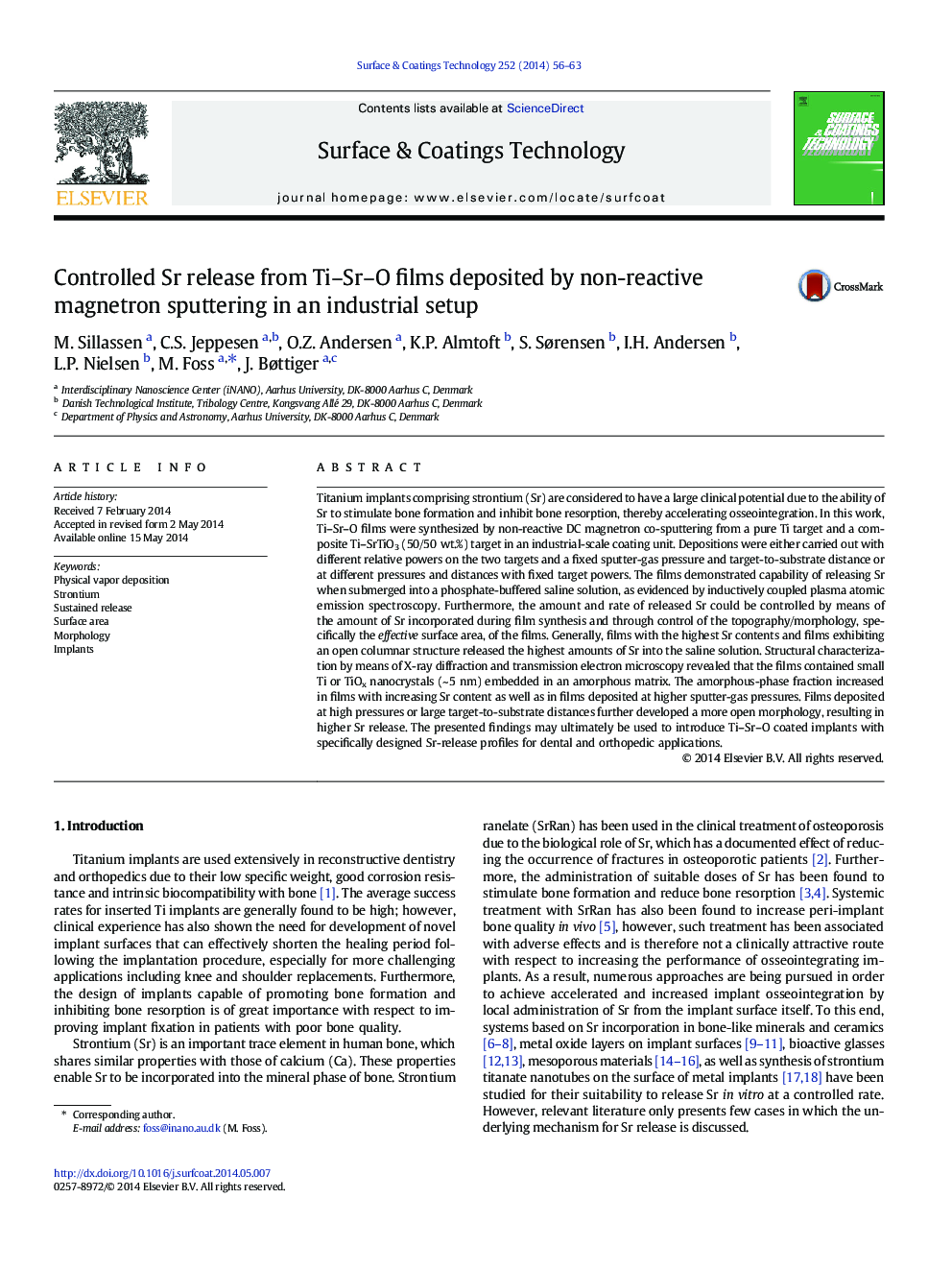| Article ID | Journal | Published Year | Pages | File Type |
|---|---|---|---|---|
| 1657477 | Surface and Coatings Technology | 2014 | 8 Pages |
•Here, we study in vitro Sr release profiles of sputtered Ti–Sr–O coatings.•The rate and amount of released Sr correlate to the film morphology and composition.•Sr2 + ions are initially released upon dissolution from the effective film surface.•During initial release, Sr2 + ions are essentially free to move into the solution.•Long-term release of Sr is likely limited to leaching through a Sr-depleted layer.
Titanium implants comprising strontium (Sr) are considered to have a large clinical potential due to the ability of Sr to stimulate bone formation and inhibit bone resorption, thereby accelerating osseointegration. In this work, Ti–Sr–O films were synthesized by non-reactive DC magnetron co-sputtering from a pure Ti target and a composite Ti–SrTiO3 (50/50 wt.%) target in an industrial-scale coating unit. Depositions were either carried out with different relative powers on the two targets and a fixed sputter-gas pressure and target-to-substrate distance or at different pressures and distances with fixed target powers. The films demonstrated capability of releasing Sr when submerged into a phosphate-buffered saline solution, as evidenced by inductively coupled plasma atomic emission spectroscopy. Furthermore, the amount and rate of released Sr could be controlled by means of the amount of Sr incorporated during film synthesis and through control of the topography/morphology, specifically the effective surface area, of the films. Generally, films with the highest Sr contents and films exhibiting an open columnar structure released the highest amounts of Sr into the saline solution. Structural characterization by means of X-ray diffraction and transmission electron microscopy revealed that the films contained small Ti or TiOx nanocrystals (~ 5 nm) embedded in an amorphous matrix. The amorphous-phase fraction increased in films with increasing Sr content as well as in films deposited at higher sputter-gas pressures. Films deposited at high pressures or large target-to-substrate distances further developed a more open morphology, resulting in higher Sr release. The presented findings may ultimately be used to introduce Ti–Sr–O coated implants with specifically designed Sr-release profiles for dental and orthopedic applications.
